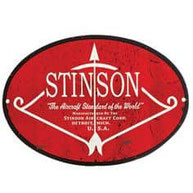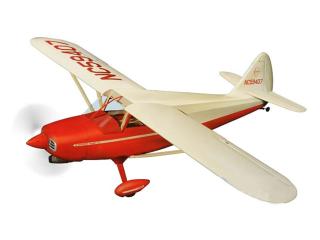
STINSON Aircraft Manuals PDF
| Title | Link |
| Stinson AT-19 Reliant Airplane Pilot's Manual PDF | download |
| Stinson L-5 Aircraft Pilot's Manual PDF | download |
|
Stinson Reliant Airplane Structure Repair Manual PDF |
download |
|
Stinson 108-1 Voyager 150 Aircraft Owner's Operating Manual PDF |
download |
|
Stinson Model 108 Series Airplanes General Service Manual PDF |
download |
|
1947 Stinson Voyager & Flying Station Wagon Aircraft Pilot Operating Handbook PDF |
download |
Stinson Aircraft History
Some STINSON Aircraft Pilot's Flight Manuals PDF are above the page.
In 1939, Stinson entered the light aircraft market and introduced a new development - the Model 105, which resembled a smaller Junior and was a three-seat strut-braced high-wing aircraft with a 75 hp Continental A75-3 engine. or A80-6 at 80 hp.
These models were built approximately in equal proportions, in total, about 530 copies were built. In 1941, the company introduced an improved Model 10 Voyager, featuring interior design and equipment.
The base variant was the Model 10-A, powered by a 90 hp Franklin 4AC-199-E3 engine. and built before 1942 in the amount of 750 airplanes.
Several aircraft were also built with a 75 hp Lycoming GO-145-E3 engine. (designation Model 10-B). Six Model 10-A aircraft powered by 80 hp Continental O-170-1 engines. pp., in 1941 were purchased for the US Army Air Force for evaluation tests and received the designation YO-54.
The tests were successful and the US Army ordered another 275 aircraft (designation O-62), which were slightly larger and heavier and powered by Lycoming O-435-1 engines.
A subsequent order included the delivery of 1,456 similar aircraft. The Sentinel name was given to the aircraft in 1942 at the same time the O-62 was renamed L-5.
This was followed by variants of the L-5A (688 airplanes; upgraded from the L-5) with an updated electrical system, the L-5B (679) with the tail section of the fuselage modified to accommodate the stretcher, and the L-5G (200) with photographic equipment.
The designation L-5D was not used; on the L-5E (558) variant, hovering ailerons were introduced and the flap area was increased. One aircraft, designated XL-5, was used to test some innovations and the O-435-2 engine.
The final production version of the L-5G (115) was similar to the L-5E, with the exception of the 190 hp O-435-11 engine installed on it. from.
In addition to the above machines, eight Stinson 105 and 12 - Model 10-A Voyager aircraft entered service with the US Army aviation under the designations, respectively, AT-19A (later L-9A) and AT-19B (L-9B).
A total of 306 L-5s were transferred to the Marine Corps and 152 to the US Navy. Almost all of these aircraft were designated OY-1 (452 aircraft), and 30 with new equipment were designated OY-2.
Under the Lend-Lease program, 40 L-5 and 60 L-5B were delivered to the British Air Force as the Sentinel Mk I and Sentinel Mk II. In total, about 3900 L-5s were built, this is the second largest observation aircraft during the WWII (after the Piper L-4 Cub).
The Sentinel, known by the nickname "Flying Jeeps", was used extensively by the US Air Force during the war years. The British Air Force used such aircraft in Burma, and the US Marines and Navy in the Pacific Ocean.
Sentinels were also used during the Korean War.
In 1962, the designation of the surviving L-5 was changed to U-19A. One aircraft, modified into a glider towing aircraft for the needs of the US Air Force Academy, was designated U-19B.


